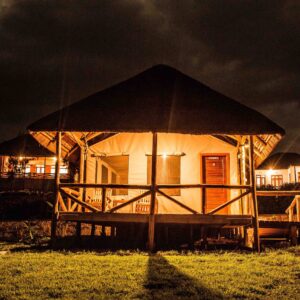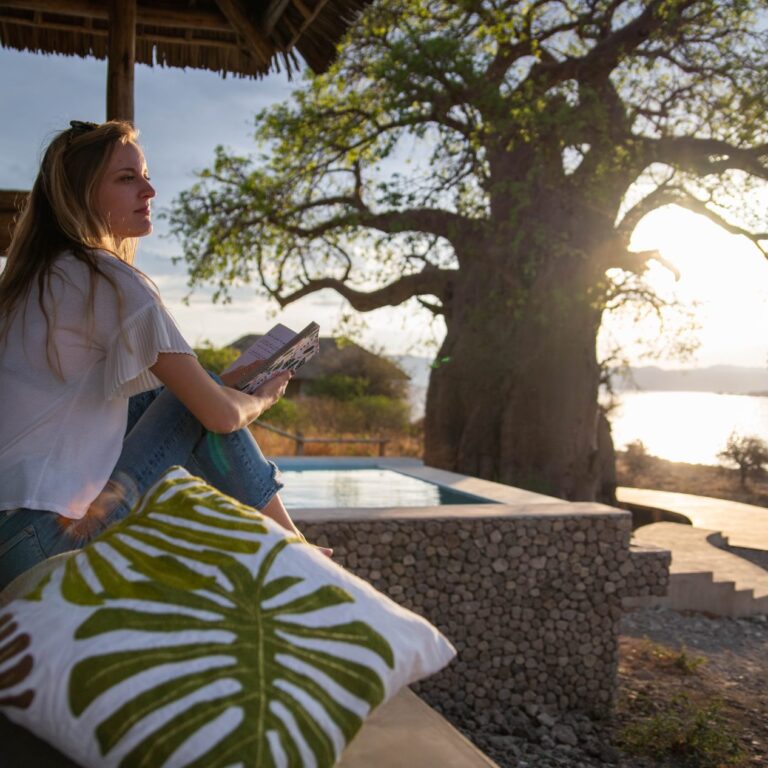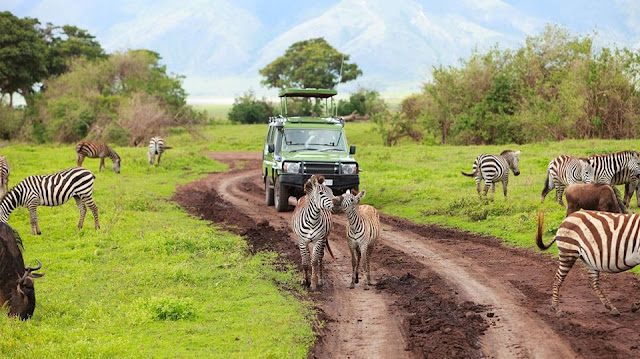After conquering Mount Kilimanjaro, options abound for rest, relaxation, and further adventure in Tanzania and beyond, including exploring Zanzibar’s beaches, embarking on a safari in national parks like Serengeti or Ngorongoro Crater, or enjoying cultural experiences and day trips in the Kilimanjaro region like Moshi or Materuni Waterfall. The last step to the summit of Mount Kilimanjaro is a moment of triumph, activities after climbing Mount Kilimanjaro. You’ve pushed your limits, battled the altitude, and stood on the roof of Africa. But the adventure doesn’t have to end there.
After the dusty boots are put away and the celebratory photos are taken. Tanzania offers a world of unforgettable experiences to complement your climb. From iconic safaris to cultural immersions and pure relaxation, here are the best things to do after conquering Kilimanjaro. The Safari Grand Slam: Unforgettable Wildlife Encounters. Your climb took you to the highest point of the land; now it’s time to explore its incredible biodiversity. Tanzania’s Northern Safari Circuit is a world-renowned wilderness and the perfect post-climb reward. A summit hike on Mount Kilimanjaro typically takes 5 to 9 days, with most climbers opting for 7 or 8-day routes. The most popular routes, like Machame, Lemosho, and Northern Circuit, are recommended for their balance of scenic beauty, acclimatization opportunities, and summit success rates. The summit push itself, usually done at night to reach Uhuru Peak at sunrise, is the most challenging part due to altitude and low oxygen levels.
1. Safari in Serengeti: The Ultimate Wildlife Spectacle
The name “Serengeti” is synonymous with African safari. This vast plain is the stage for the Great Wildebeest Migration, a natural phenomenon of over a million wildebeest, zebras, and gazelles moving in a cyclical pattern in search of fresh grazing lands. Even outside of the migration, the Serengeti is teeming with wildlife. It’s one of the best places in Africa to spot the “Big Five” (lion, leopard, elephant, rhino, and buffalo) and witness dramatic predator-prey interactions. A safari here is an immersive experience of vast landscapes and raw, untamed nature. After conquering Mount Kilimanjaro, a safari in Serengeti National Park is an excellent and popular choice for unwinding and experiencing more of Tanzania’s natural beauty and wildlife. With other great options bucket list journey for your African vacation.
2. Explore Tarangire Safari: The Land of Giants
After conquering Mount Kilimanjaro, embarking on a safari in Tarangire National Park offers a fantastic way to extend your Tanzanian adventure. Known for its large elephant herds, impressive baobab trees, and diverse wildlife. Tarangire is often included in post-Kilimanjaro safari itineraries alongside other iconic parks like the Ngorongoro Crater and Serengeti National Park. Tarangire National Park offers a distinct safari experience. The park’s rugged landscape and swamps attract a diverse range of animals. Especially during the dry season, when they congregate around the Tarangire River. You’ll witness elephants of all sizes, from playful calves to massive bulls, and a surprising variety of other wildlife. The park’s quieter atmosphere creates a more intimate and less crowded safari experience.
3. Adventure Activities in Lake Manyara
After climbing Kilimanjaro, Lake Manyara National Park offers a variety of adventure activities. Including game drives, guided walks, canoeing, nighttime safaris, and cultural experiences with nearby communities. You can also enjoy birdwatching, horseback riding, and the unique canopy tree walk for a different perspective on the park’s diverse habitats and wildlife, including its famous tree-climbing lions. Lake Manyara is a beautiful and compact park nestled at the base of the Great Rift Valley. It’s famous for its tree-climbing lions, a rare behavior that is fascinating to witness. The park is also a birdwatcher’s paradise, with a kaleidoscope of flamingos, pelicans, and storks decorating the lake’s shores. Beyond the traditional game drives, Lake Manyara offers a range of adventure activities like canoeing on the lake, a unique way to see hippos and other water-loving animals.
4. Explore Ngorongoro Crater Safari: An Eden on Earth
After climbing Mount Kilimanjaro, a safari in the Ngorongoro Crater offers a remarkable “Eden on Earth” experience. Showcasing unparalleled wildlife density within a unique, natural caldera, a UNESCO World Heritage site. This extension to your Tanzanian adventure provides a distinct contrast to the mountain’s heights. Immersing you in the “Garden of Eden” with its incredible biodiversity and chances to spot the Big Five. Often called the “Eighth Wonder of the World,” the Ngorongoro Crater is a collapsed volcanic caldera that forms a self-contained ecosystem. The crater floor is a haven for wildlife, with one of the densest populations of animals in Africa. Descending into the crater is like entering a lost world, where you can easily spot the Big Five, including the elusive black rhino. The stunning scenery and incredible concentration of animals make a safari here an unforgettable highlight.
5. Explore Lake Eyasi Safari: A Glimpse into Ancient Ways
After climbing Kilimanjaro, a Lake Eyasi safari offers a unique “off-the-beaten-path” cultural immersion. Allowing you to interact with indigenous communities like the Hadzabe hunter-gatherers and Datoga blacksmiths. Alongside exploring the natural beauty of Tanzania’s largest soda lake and its surroundings. For a truly unique cultural experience, a visit to Lake Eyasi is a must. This soda lake is the home of the Hadzabe and Datoga tribes, two of Tanzania’s last remaining hunter-gatherer and pastoralist communities. You can join the Hadzabe on a morning hunt, learning their ancient skills of tracking and fire-making. It’s a profound opportunity to connect with a culture that lives in harmony with nature and to gain a deeper understanding of humanity’s ancestral roots. A Coastal Retreat and Cultural Immersion After the physical exertion of the climb and the early morning wake-ups of the safari, a change of pace is in order.
6. Visit Zanzibar: Paradise Found
After climbing Mount Kilimanjaro, a very popular and rewarding choice is to visit Zanzibar. Known as a tropical paradise for relaxation and recharge. This idyllic archipelago off Tanzania’s coast offers stunning white-sand beaches, turquoise waters, and opportunities for snorkeling, diving, and exploring the historic Stone Town. Making it the perfect post-trek destination to celebrate your achievement. The “Spice Island” of Zanzibar is the perfect antidote to tired muscles. Just a short flight from the mainland, this archipelago. Offers pristine white-sand beaches, turquoise waters, and a rich history. You can relax on the beach, go snorkeling, or scuba diving in the vibrant coral reef. Explore the winding alleyways of Stone Town, a UNESCO World Heritage Site. Zanzibar’s blend of African, Arab, and Indian influences creates a unique and captivating atmosphere.
7. Connect with Maasai Culture
After conquering Mount Kilimanjaro, you can connect with Maasai culture by visiting authentic Maasai villages like Olpopongi Maasai Village or staying at Maasai Retreat. These offer immersive cultural experiences and contribute to the local community. The Maasai are one of the most recognizable and vibrant tribes in East Africa. A visit to a Maasai boma (village) is a powerful cultural exchange. You can learn about their traditions. Witness their captivating singing and dancing, and hear stories of their nomadic way of life. It’s an opportunity to appreciate a culture that has successfully preserved its identity in a rapidly changing world. Local Adventures and Relaxation. If you’re not ready to travel far, there’s still plenty to do closer to Kilimanjaro.
8. Climb Mount Meru: A Challenger’s Delight
Climbing Mount Meru after Kilimanjaro is a popular and rewarding choice. Offering a chance to build on your acclimatization and enjoy a less crowded, more challenging trek with abundant wildlife. While not a direct replacement for a safari or beach holiday. Mount Meru provides a unique mountaineering experience that complements a Kilimanjaro climb by offering stunning views, diverse ecosystems, and a sense of solitude. For those who simply can’t get enough of mountain climbing. Mount Meru is an excellent second act. Located in Arusha National Park, this dormant volcano offers a challenging but rewarding trek. The climb is a great way to acclimate for Kilimanjaro or, in this case, a final summit push for the truly adventurous.
9. Explore Arusha National Park: A Hidden Gem
After climbing Kilimanjaro, Arusha National Park offers a diverse and relaxing safari experience with activities like walking safaris, canoeing, and game drives. Allowing you to explore volcanic craters, vibrant lakes, and lush forests while spotting wildlife in a more intimate setting than larger parks. This small but diverse park is often overlooked, but it offers a fantastic day trip. You can go on a walking safari. Explore the Momella Lakes with their flocks of flamingos, and spot giraffes, zebras, and monkeys. The park also provides stunning views of Mount Meru and Kilimanjaro on a clear day.
10. Relax and Rejuvenate in Moshi
After climbing Kilimanjaro, Moshi offers numerous options for relaxation and rejuvenation. Including visiting Materuni Waterfall and coffee tours for a refreshing natural experience and cultural immersion. Chemka hot springs for a therapeutic dip, and exploring local markets and cultural sites like Chagga villages and Maasai Bomas. Moshi, the gateway to Kilimanjaro, is a town with a laid-back vibe and stunning views of the mountain. After your climb, this is the perfect place to unwind. Enjoy a well-deserved massage, take a coffee tour to see how Tanzania’s famous beans are grown and processed, or simply sit back and reflect on your achievement.
11. Arusha City Tour and Miserani Snake Park
After climbing Kilimanjaro, an Arusha City Tour combined with a visit to Meserani Snake Park offers a rewarding and diverse experience. Allowing you to relax, learn, and encounter unique wildlife. This combination provides a change of pace and scenery from the mountain climb. With the city tour offering cultural insights and the snake park providing a thrilling look at reptiles and Maasai culture. Arusha, a bustling hub, offers a different kind of adventure. A city tour can introduce you to local markets, vibrant street life, and the National Museum. For a unique experience, visit the Meserani Snake Park. Where you can learn about and see a variety of African reptiles, and even hold a live snake if you dare.
12. Wildebeest Migration
After conquering Mount Kilimanjaro, the best way to extend your incredible Tanzanian adventure and witness one of Africa’s most spectacular natural phenomena is to embark on a Wildebeest Migration safari in Serengeti National Park. This iconic event, where millions of wildebeest and zebras traverse the plains. Offers an unparalleled wildlife viewing experience and can be combined with visits to other nearby parks like Ngorongoro Crater and Tarangire National Park. The Wildebeest Migration is a spectacle that deserves mention. The timing of your visit is key, as the herds move between the Serengeti and Kenya’s Masai Mara. Seeing the wildebeest crossing the Grumeti or Mara Rivers. Battling crocodiles and predators is one of the most dramatic and unforgettable scenes in all of nature.
Where do you go to the bathroom when climbing Kilimanjaro?
While visiting Mount Kilimanjaro, you can rest assured that there will be public toilets at each camp stop. But don’t expect too much; you won’t find porcelain loos, marble sinks, or hot water in these primitive public washrooms. Usually bereft of even a door. We generally advise that the best time to climb Kilimanjaro is during the warmest and driest times of year, from December to mid-March and mid-June to the end of October. However, although these are considered to be the best times to climb the mountain in terms of weather, they are also the busiest months.
Do you need to train to climb Kilimanjaro?
Yes, you need to train to climb Mount Kilimanjaro. While it’s not a technically challenging climb, it’s a strenuous one that requires significant physical fitness and mental preparation. Effective training should include building both endurance and strength, with a focus on hiking with elevation gain and carrying a daypack. Kilimanjaro is an achievement many hikers, athletes, and nature lovers have set their eyes on. But towering 19,341 feet, with a nearly 50% fail rate, reaching the peak takes a hefty amount of work against significant odds. Climbing Mt. Kilimanjaro is absolutely worth it.
Where to Sleep Before and After Climbing Kilimanjaro
Before and after climbing Kilimanjaro, you’ll typically sleep in a variety of accommodations in towns near the mountain. Such as Moshi or Arusha, and on the mountain, your options will be either huts (only on the Marangu route) or tents (on all other routes), provided by your tour operator. Before Climbing: Moshi or Arusha. These towns at the base of Kilimanjaro offer numerous lodging options, from budget-friendly hostels to comfortable lodges and luxury hotels with amenities like pools and tranquil gardens. Popular choices include Parkview Inn, Chanya Lodge, and Weru Weru River Lodge in Moshi, as well as Rivertrees Country Inn in Arusha.
During the Climb: Marangu Route. This is the only route where you can sleep in mountain huts, which are dormitory-style rooms with multiple beds. Other Routes: On all other routes (e.g., Rongai, Machame), you will sleep in tents provided by your tour operator and set up by porters in designated campsites. These are typically four-season, sturdy, and waterproof tents designed for mountain conditions.
After climbing Kilimanjaro, you will likely spend your recovery nights in accommodations in towns like Moshi or Arusha, or potentially in other areas like Karatu if you’re planning further safaris. These locations offer convenient access to post-climb relaxation and onward travel for safari adventures in nearby national parks like Serengeti, Ngorongoro Crater, or Tarangire.
Concluding
Your Kilimanjaro climb is not the end of your journey. But rather the beginning of a new one. From the thundering plains of the Serengeti to the tranquil beaches of Zanzibar. Tanzania has an incredible array of experiences waiting for you. By combining the physical triumph of the climb with the cultural richness and natural beauty of the country, you’ll create a truly once-in-a-lifetime adventure.








